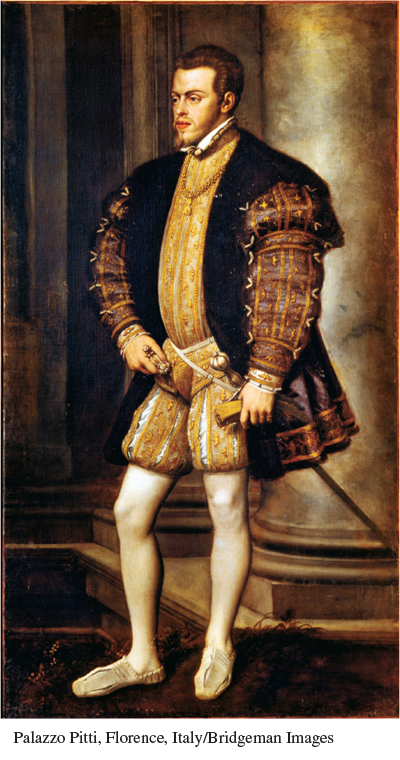A History of Western Society: Printed Page 452
A History of Western Society, Value Edition: Printed Page 436
A History of Western Society, Concise Edition: Printed Page 454
Spanish Silver and Its Economic Effects
The sixteenth century has often been called Spain’s golden century, but silver mined in the Americas was the true source of Spain’s wealth. In 1545, at an altitude of fifteen thousand feet, the Spanish discovered an extraordinary source of silver at Potosí (poh-
In the sixteenth century Spain experienced a steady population increase, creating a sharp rise in the demand for food and goods. Spanish colonies in the Americas also demanded consumer goods, such as cloth and luxury goods. Since Spain had expelled some of its best farmers and businessmen — the Muslims and Jews — in the fifteenth century, the Spanish economy was suffering and could not meet the new demands. The excess of demand over supply led to widespread inflation. The result was a rise in production costs and a further decline in Spain’s productive capacity.

Did the flood of silver bullion from America cause the inflation? Prices rose most steeply before 1565, but bullion imports reached their peak between 1580 and 1620. Thus silver did not cause the initial inflation. It did, however, greatly exacerbate the situation, and, along with the ensuing rise in population, the influx of silver significantly contributed to the upward spiral of prices. Inflation severely strained government budgets. Several times between 1557 and 1647, Spain’s King Philip II and his successors wrote off the state debt, thereby undermining confidence in the government and leaving the economy in shambles. After 1600, when the population declined, prices gradually stabilized.
As Philip II paid his armies and foreign debts with silver bullion, Spanish inflation was transmitted to the rest of Europe. Between 1560 and 1600 much of Europe experienced large price increases. Prices doubled and in some cases quadrupled. Spain suffered most severely, but all European countries were affected. Because money bought less, people who lived on fixed incomes, such as nobles, were badly hurt. Those who owed fixed sums of money, such as the middle class, prospered because in a time of rising prices, debts lessened in value each year. Food costs rose most sharply, and the poor fared worst of all.
In many ways, though, it was not Spain but China that controlled the world trade in silver. The Chinese demanded silver for their products and for the payment of imperial taxes. China was thus the main buyer of world silver, absorbing half the world’s production. The silver market drove world trade, with New Spain and Japan being mainstays on the supply side and China dominating the demand side. The world trade in silver is one of the best examples of the new global economy that emerged in this period.